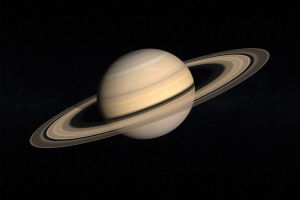Mercury, one of the eight planets in the solar system, is the closest planet to the sun. Here are 4 interesting facts about Mercury.
1. Mercury goes by different names around the world
Mercury has its own unique names in different parts of the world and at different times in the same region. Mercury was first discovered by the Semites in the third millennium BC, when they called it Ubu-idim-gud-ud.
The earliest extant detailed recorded observations of Mercury were the Babylonians, who called it gu-ad or gu-utu. In Europe, Mercury has more symbolic names. The Greeks gave it two ancient names, Apollo in the morning and Hermes in the evening.
2. The basic situation of Mercury
Mercury's orbital period is 87.9691 days, and it meets the earth once in about 116 days, and its orbital speed is much higher than that of other planets in the solar system.
Mercury is the planet with the largest temperature difference between day and night on the surface. The atmosphere is extremely thin and cannot effectively store heat. The temperature in the equatorial region can reach 432°C during the day, and it can drop to -172°C at night.
Mercury's surface is covered in craters, similar to the moon and other moons, and its geology has been inactive for billions of years. Mercury has no seasonal changes, and it is the only planet in resonance with the sun's orbit.
The time for each three rotations is almost equal to the time it takes to make two revolutions around the sun. Looking at Mercury from the sun, with reference to its rotation and revolution, there is only one solar day every two Mercury years.
3. Mercury is the shyest planet in the Sun
Now many people ridicule Mercury as the shyest planet among the eight planets in the solar system, and even Copernicus, the "father of modern astronomy" who proposed the heliocentric theory, has never seen it.
The authenticity of this statement is still doubtful, but Copernicus did not write his own observation data on Mercury in his masterpiece "Theory of the Movement of Celestial Bodies", which also reflects the difficulty of Mercury's observation to a certain extent.
The distance between Mercury and the sun is relatively close, and the orbital period is only 88 days. Therefore, its maximum distance from the sun is only about 28 degrees.
Generally, it can only be seen at sunrise and sunset during the large elongation period several times a year. At the same time, Mercury has the largest orbital eccentricity among the eight planets, and the rotation period and the revolution period exhibit a 3:2 spin-orbit resonance.
Therefore, it is difficult to observe Mercury with astronomical telescopes on Earth.
4. Humans send probes to Mercury
The first probe that humans sent to Mercury was NASA's Mariner 10. In 1974, the Mariner 10 probe launched by the National Aeronautics and Space Administration (NASA) completed the first mapping mission (part of) the surface of Mercury. MESSENGER is the second probe NASA has sent to Mercury. It was launched on August 3, 2004, and returned the first true picture of Mercury on March 29, 2011.
In 2018, the European Space Agency (ESA) and the Japan Aerospace Exploration Agency (JAXA) jointly launched the "Bepi Colomb" Mercury probe, which is expected to arrive in the orbit of Mercury in 2025 to start research work.
The BepiColombo probe will conduct the most extensive and detailed study of Mercury to date.
As one of the eight planets in the solar system, Mercury enjoys a high reputation worldwide. However, because it is too close to the sun, it is too difficult to observe, and it is still very mysterious to humans.
Therefore, people's imagination has been stimulated, and many science fiction works about Mercury have been created.

